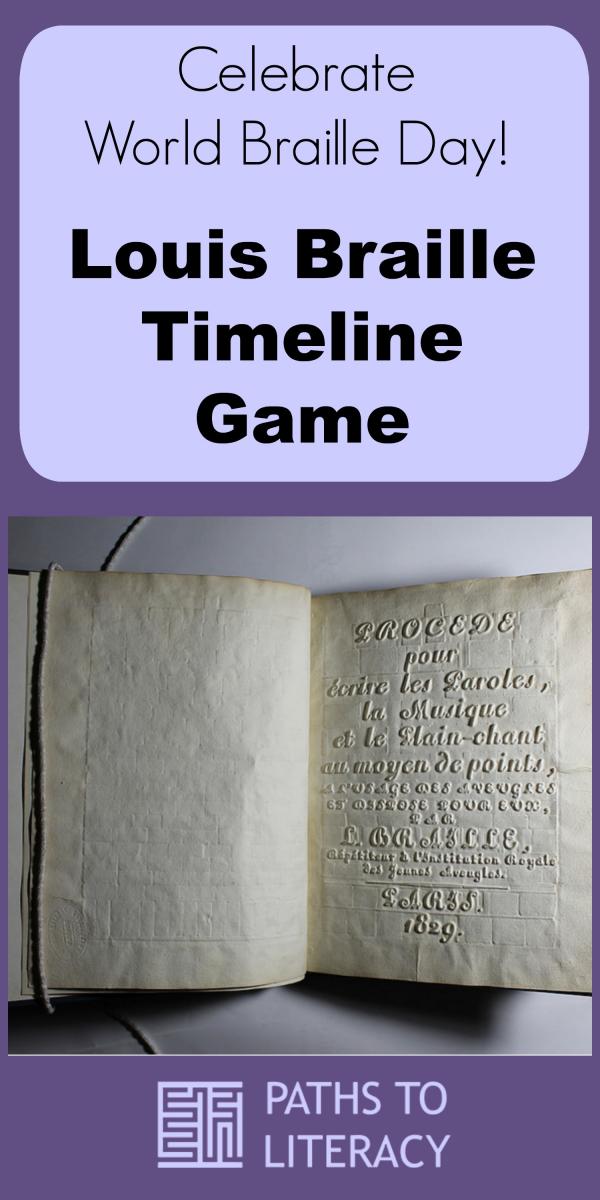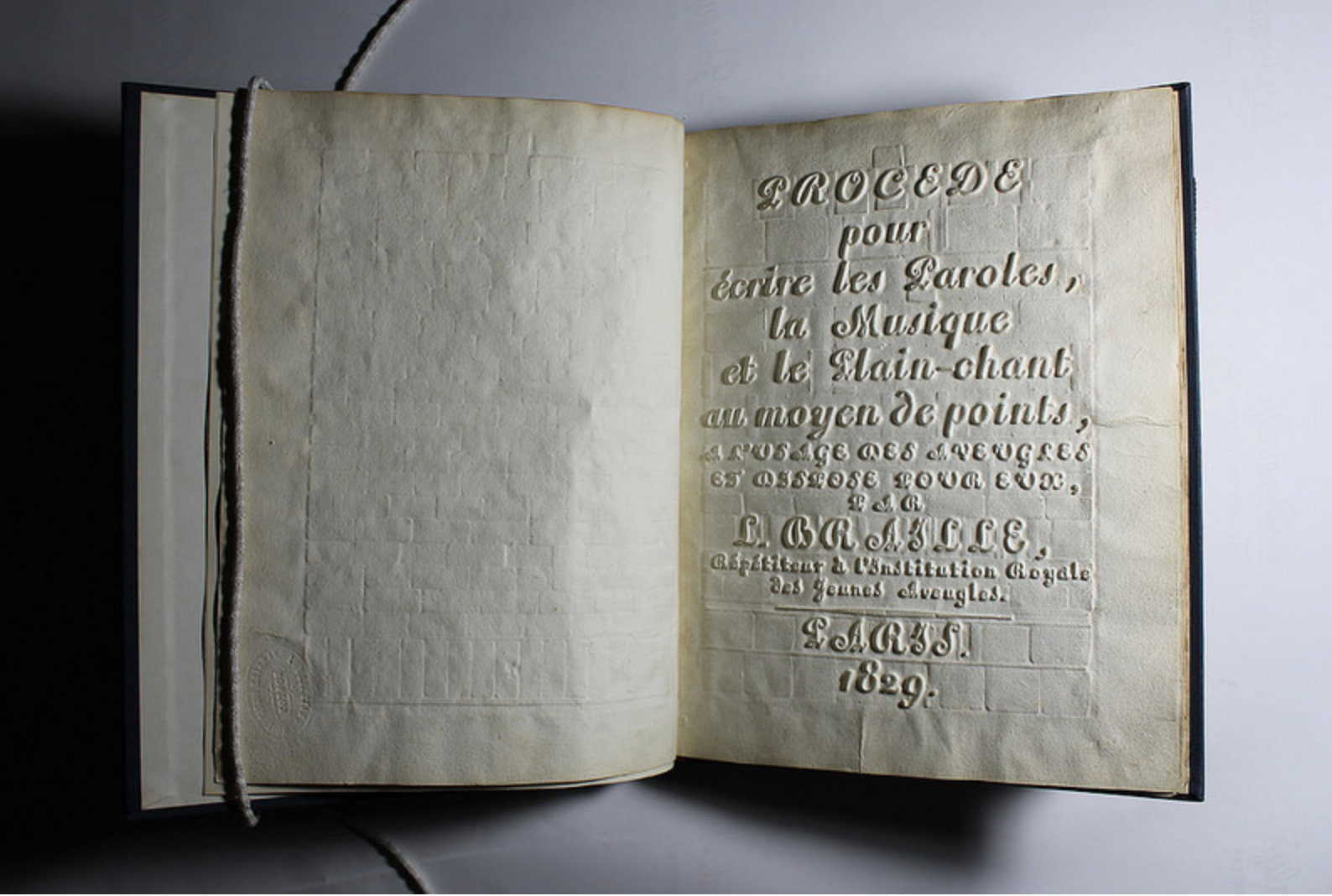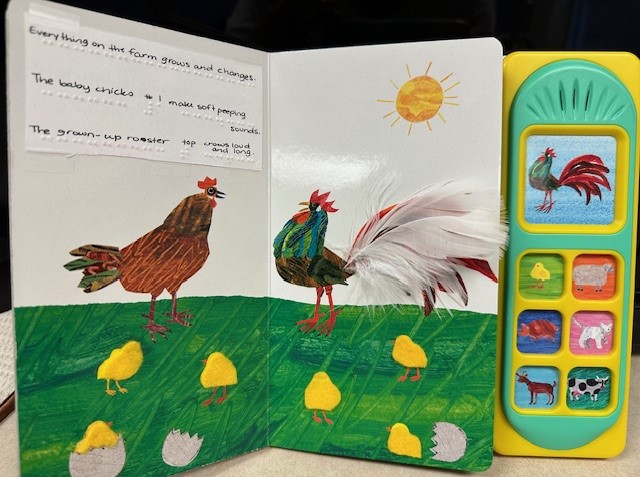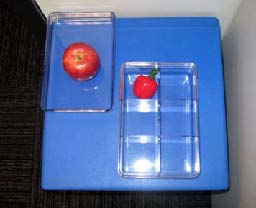Every year on January 4th, students can play this game in honor of Louis Braille’s birthday.
- Print out the timeline of his life in print and braille versions.
- Cut the timeline into strips, with one event on each strip of paper.
- Hand out the strips of paper to students to decode.
- Ask students to line up in the order in which the events occurred.
This is a fun way to review the events of Louis Braille’s life and to learn about why he is such an important figure. In addition, students can enjoy practicing sequencing dates and years.
(Image on the right is used with permission of the Archives at Perkins School for the Blind: Title page of “Procedure for Writing Words, Music, and Plainsong in Dots” — “PROCEDE pour écrire les Paroles, la Musique, et le Plain-chant au moyen de points”, by Louis Braille, 1829)
Timeline of Louis Braille’s Life
1809: I was born on January 4 in Coupvray, France. Coupvray is a small village about 25 miles from Paris.
1812: When I was 3 years old, I was imitating my father in his harness shop. I injured my right eye. I eventually went blind in both eyes.
1815: Abby Pauley, the local priest, began teaching me. He quickly realized I was a smart boy in spite of my blindness.
1816: I began to attend the local village school in Coupvray. I had no way to read or write, so I listened to all my lessons. I was at the top of my class!
1819: On February 15 my father and I traveled by stage coach to Paris. I had never been to Paris and was very excited. I went to the Royal Institute for Blind Youths.
1822: A man named Charles Barbier came to the Royal Institute for Blind Youths. He showed me and my fellow students his night writing method.
1824: After working for three long years on my own raised dot code, I finally showed it to Dr. Pignier, the director of the Royal Institute for Blind Youths. He liked it and allowed the students to use it.
1828: On August 28 I was hired to be an apprentice teacher at the Royal Institute for Blind Youths. A few years later I became a teacher.
1829: I published my first book using my raised alphabet code. It was called Method of Writing Words, Music and Plain Songs by Means of Dots for Use by the Blind and Arranged for Them.
1831: On May 31 my older brother Simon came to Paris to tell me my father had died. I was very sad. I returned to my village of Coupvray to mourn with my family.
1834: The Exposition of Industry was held in Paris. I was granted permission to exhibit my code and demonstrated it to attendees.
1835: I was officially diagnosed with tuberculosis, a condition I most likely had since my teenage years. My health was declining steadily.
1840: Mr. Dufaus became the new director of the Royal Institute for Blind Youths. He banned the use of my raised code! He burned all of the embossed books at the Institute.
1844: On February 22 my raised code was demonstrated during a ceremony to honor the new building of the Royal Institute for Blind Youths. This date is most often said to be the birth of the braille code.
1852: I died on January 6 with my friends by my side. I had turned 43 two days before. I was buried in Coupvray.
1952: In celebration of the 100th anniversary of my death I was reburied in Paris. However, my hands remained in a special urn in my home village of Coupvray.
Download the Word version of this timeline.
Download the DBT .dxb version to emboss.
We also suggest that you sing the Louis Braille Song as part of your celebration!





